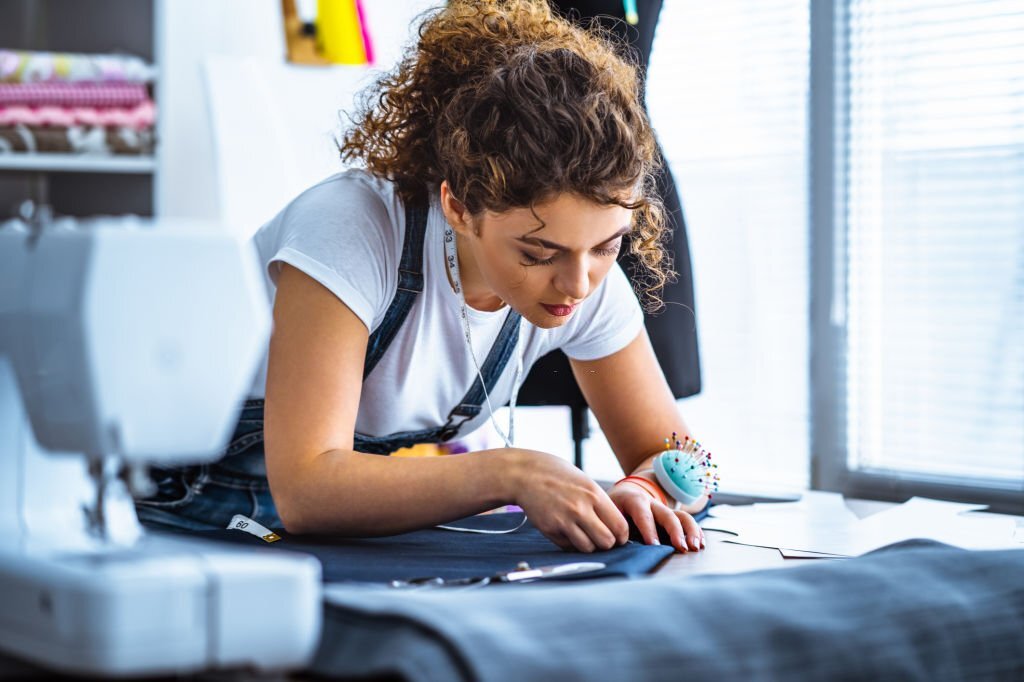When two or more layers of fabric, leather or other materials are joined together by stitches, this is known as a seam. Industrial sewing machines are used to sew the seams in today’s mass-produced clothing, footwear, home textiles, and sporting items. Sewing by hand and machine can be used in several crafts and professions, including home shoemaking, dressmaking, quilting, and tailoring. We can easily identify seams in clothing types: plain, lapped, bound, flat, and many more. We can get the best quality of seams by various techniques of raveling raw fabric edges and neatening the inside of the garment.
The seams used to assemble sewn products are load bearing and should ideally have physical characteristics comparable to the material being sewed. With each application, a different type of stitch and sewing thread will be used. Therefore, it’s crucial to be familiar with the many seam types, their uses, and accessible variations so you can pick the one that best suits your sewing demands. In clotting manufacturer, process seams are known as one of the best quality. In this blog, we will guide you through different types of seams.
There are different types of seams which are as follows:
Superimposed Seam:
Superimposed seams are made of two different or more pieces of material. These two different pieces joined over each other to their edges. A superimposed seam can also be sewn by different types to develop another seam. This process is mostly used in making lingerie and shirts.
Lapped Seam:
We can create a lapped seam by connecting two or more materials lapped over each other through its edges. If we are talking about which is the best quality type in lapped seams. The lapped felled type is the most efficient type of lapped seam. You can use it to protect jeans or other garments in the process of sewing. A flat, folded seam with only one row of stitching showing on the top surface is created by two stitching operations and a folding operation in the superficially similar French seam type.
Most of the time, 401 chain stitch is used to sew the lap felled. Those companies manufacture jeans, mostly using lapped seams because they want the best quality. Some companies also use french seam to make rain clothes, jackets, or dresses which consumers can easily use during rainy days.
Bound Seams:
Two fabric edges, either flat or folded, are brought together and over-stitched in these seams (also known as butt seams). The main reason for using this type of seam where the manufacturer does not want the thickness of the fabric. As in foundational clothing or underwear. The cover thread may be attractive in addition to being sturdy, and the looper thread must be soft yet robust. Because the edges of this seam will be butted together rather than overlapping, it is known as a flat seam. When a seam needs to be devoid of bulk, it has two components and can be found on delicate knitted clothing. Those companies need the best sublimation clothing suppliers to use bound seam because it gives a lot of production in minimum time.
Piping Seam Class:
On a single ply of fabric, the decorative stitch is a succession of stitches that follow a straight or curved line or an ornamental pattern. Piping in its different forms, which creates a raised line along the fabric surface, is one of the more difficult sorts. The stitching causes the cloth to have decorative surface effects, such as pin tucks, braid application, etc. This sort of seam has at least one component.
Single Ply Construction:
One piece of fabric with both edges turned in makes up this seam lesson. The belt loops or bets for which a folder can be attached to the machine are where it is most frequently found. There is only one component needed for this kind of seam. This seam class consists of seams where an additional component must be sewn onto the edge of a piece of cloth, such as an elastic braid on the edge of women’s underwear. This kind of seam needs two parts.
Edge Finishing-Neatening Class:
A single ply of material’s edge is folded or covered with a stitch known as an edge finishing stitch. The simplest of these processes is serging, Type 6.01.01, which involves neatening and preventing fraying by stitching over a single-ply cut edge. The seam class must include seams that can be employed when the raw edge needs to be finished, and the edges are neatened with stitches. This form of seam always has just one component. This contains other well-liked techniques for creating a tidy edge, such as hemming and blind stitch. Sportswear manufacturer companies use this type of seam to increase their sportswear production.

